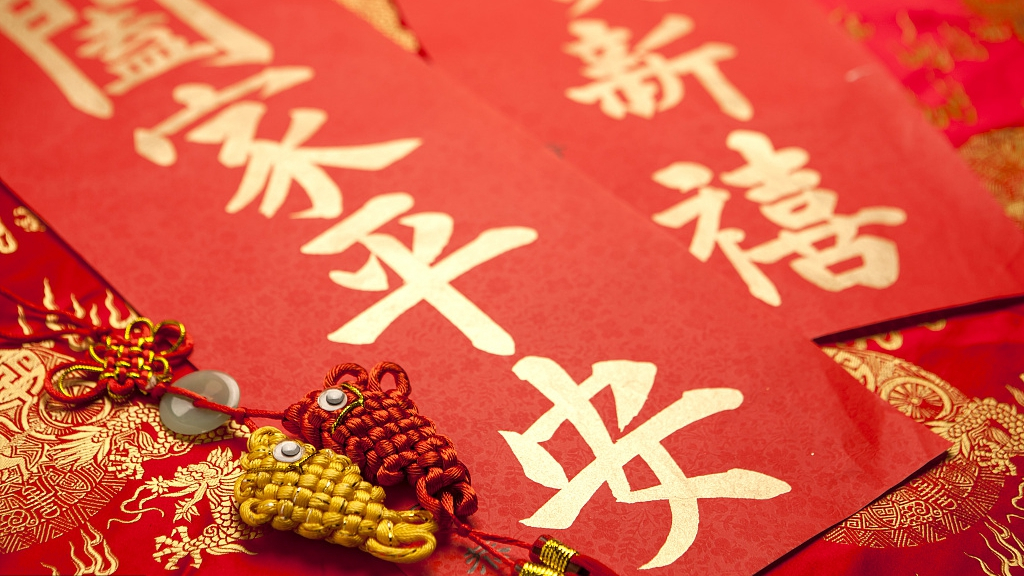As the Spring Festival getting close, it's time to do some preparation from now.
Different from other festivals, the traditional Spring Festival lasts more than a month, throughout the second half of La Yue (the twelfth month) and the first half of the Zheng Yue (the first month) of the lunar year.
But what are the special days during this festive period and what do people do on those days? Here are the festival schedule and the related customs.
The 23rd and 24th day of La Yue
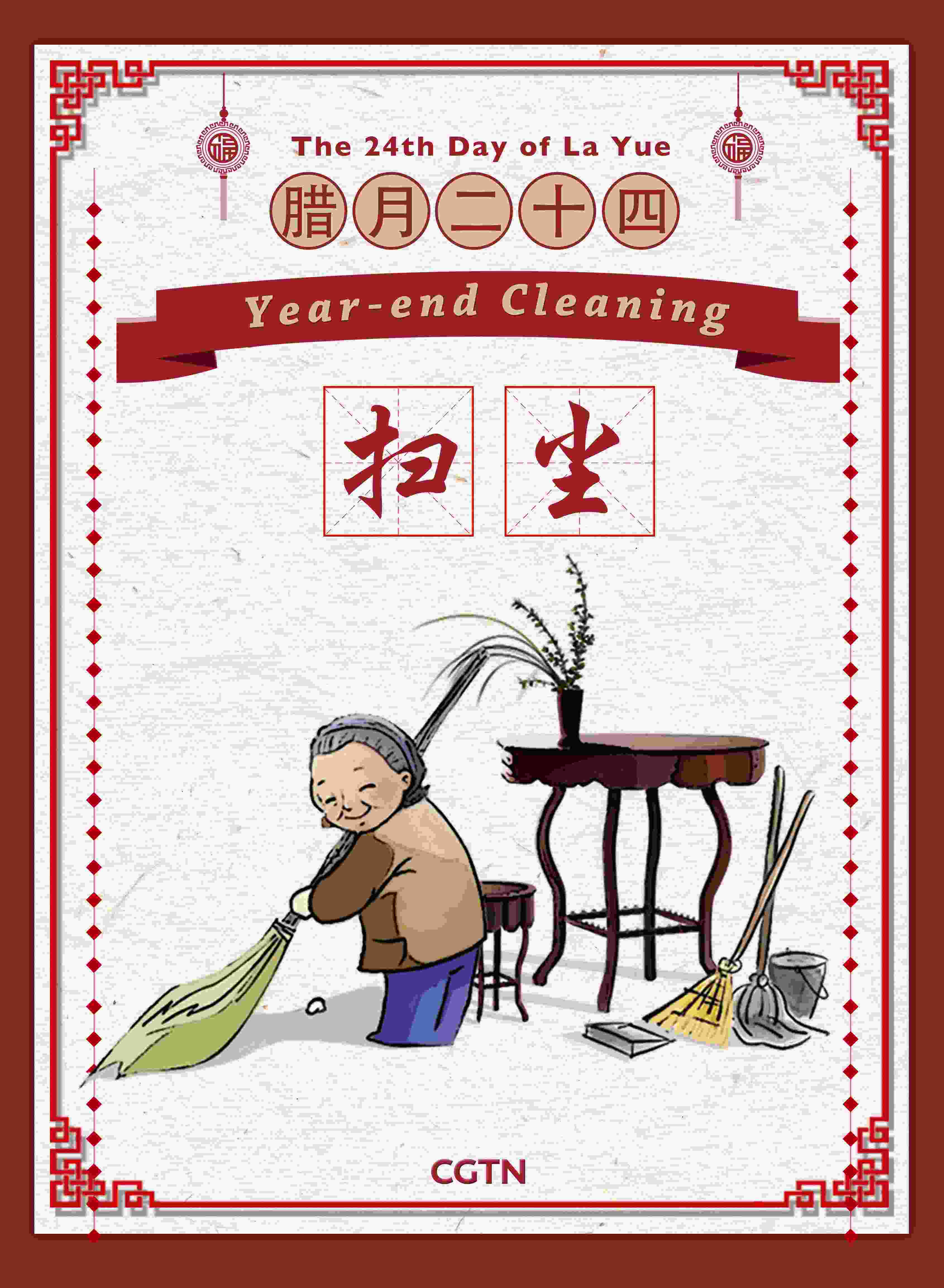
The 23rd day of La Yue is the day people chose to clean their homes. /CGTN Photo designed by Du Chenxin
The 23rd day of La Yue is the day people chose to clean their homes. /CGTN Photo designed by Du Chenxin
The 23rd day of La Yue in north China and the 24th day of the month in south China are the Xiao Nian Festival on the Chinese lunar calendar. Xiao Nian is also called "Little (Chinese) New Year," symbolizing the start of the Spring Festival.
On this day, people usually do house-cleaning. It's said that most of the gods go back to heaven to state their work in the concluded year, so people can do the cleaning without disturbing or offending them.
The 25th day of La Yue
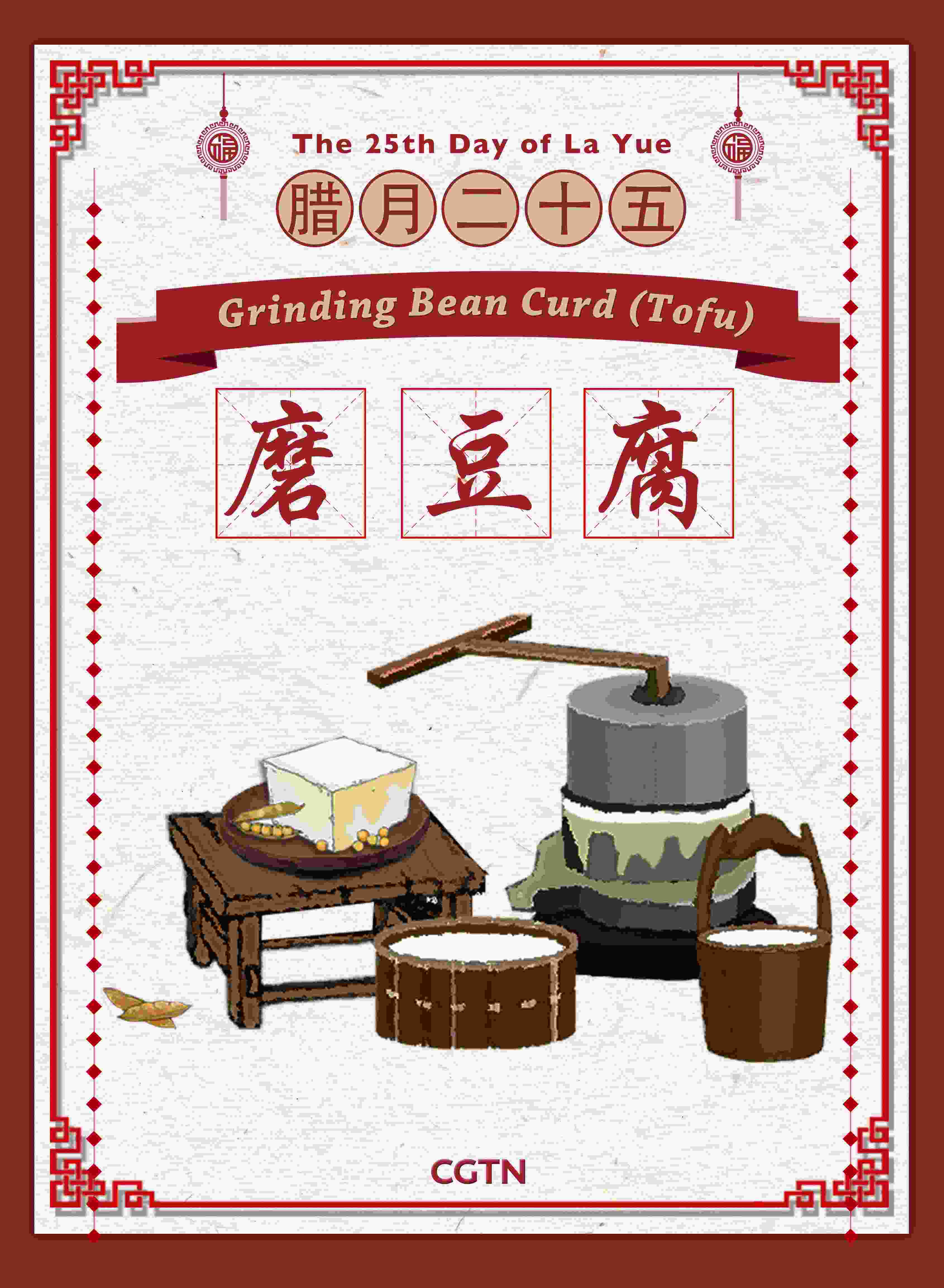
On the 25th day of La Yue, traditionally people grind bean curd, or Tofu. /CGTN Photo designed by Du Chenxin
On the 25th day of La Yue, traditionally people grind bean curd, or Tofu. /CGTN Photo designed by Du Chenxin
In our legends, the Jade Emperor, the ruler of the heaven, descend to earth to inspect the world on this day, to see if every household lives an honest, frugal, and diligent life. As traditional value leads, people who work hard but live poorly should be sympathized and rewarded. To show the frugality and pray for the emperor's reward, traditionally people make bean curd, or Tofu, cheap food in China.
In northeast China, people make a decent amount of Nian Dou Bao, a kind of bun made of glutinous millet stuffed with red bean paste. Nian Dou Bao is also a staple food during the Spring Festival.
The 26th Day of La Yue
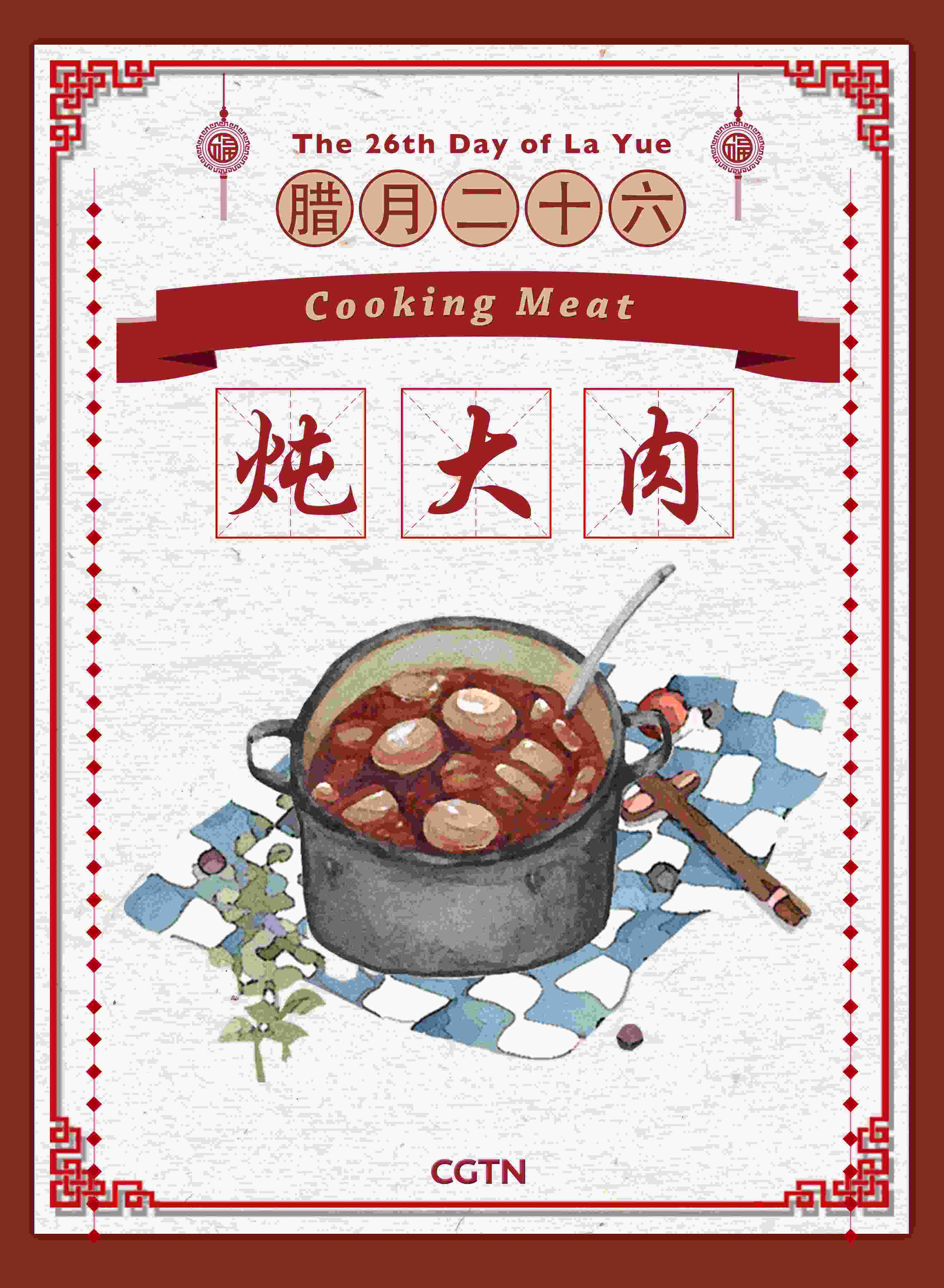
On the 26th day of La Yue, people cook meat. /CGTN Photo designed by Du Chenxin
On the 26th day of La Yue, people cook meat. /CGTN Photo designed by Du Chenxin
Many families typically eat pork and cook the meat. Other families, who don't raise pigs, go to the local fair for a hunk of meat. In the agrarian society in the past, people hardly have a chance to enjoy meat except for the Spring Festival. The meat also represents the biggest celebration throughout the year.
The 27th Day of La Yue
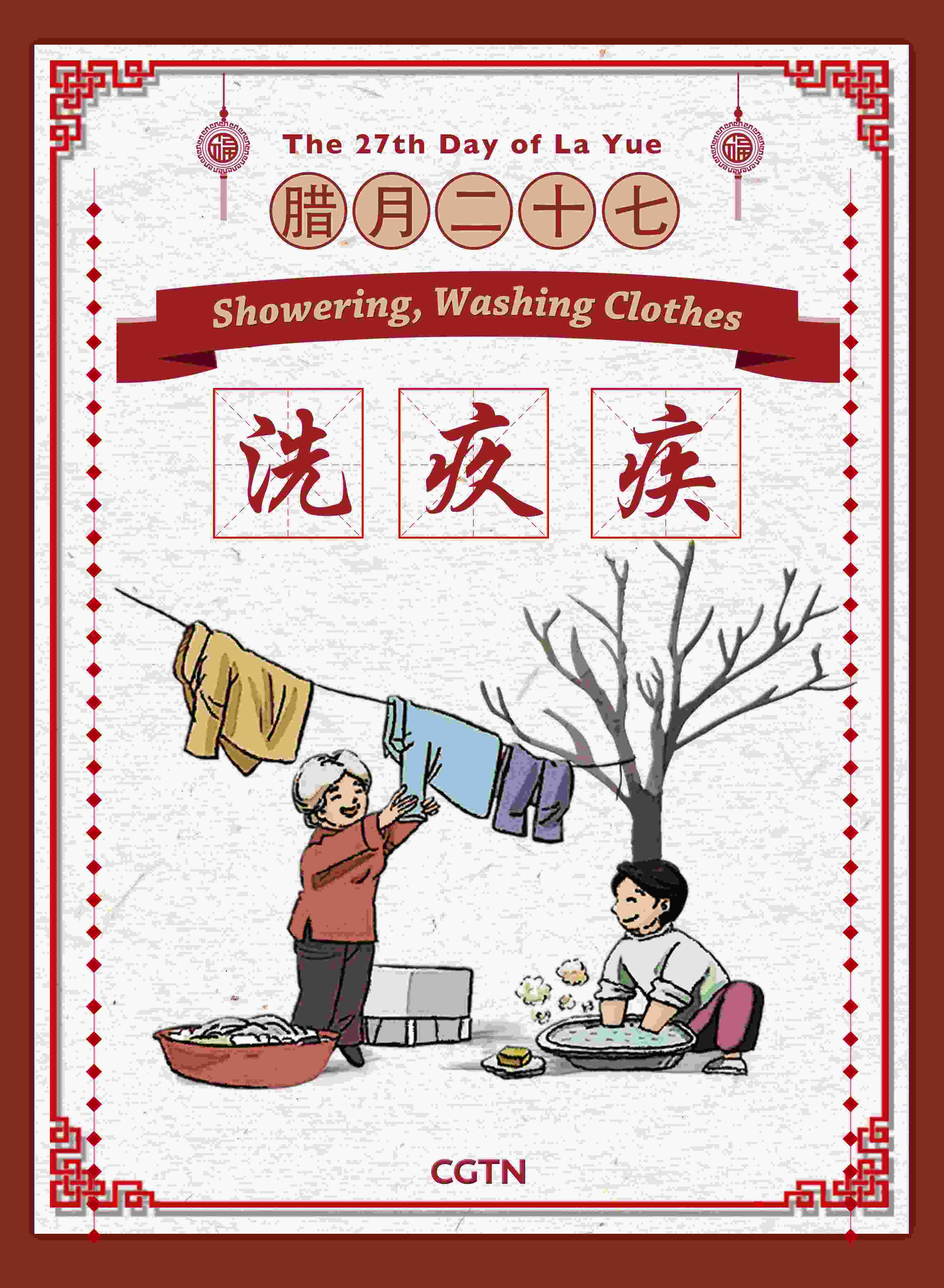
On the 27th Day of La Yue, people wash clothes and take showers. /CGTN Photo designed by Du Chenxin
On the 27th Day of La Yue, people wash clothes and take showers. /CGTN Photo designed by Du Chenxin
Do the laundry, bathe or take a good shower. Those activities symbolize for washing off all the bad luck and potential illness in the upcoming Chinese New Year.
In places like Beijing and Tianjin, an old tradition is to eat a rooster. Most people prefer a rooster instead of hen because of its majestic looking, and believe it will bring good luck.
The 28th Day of La Yue
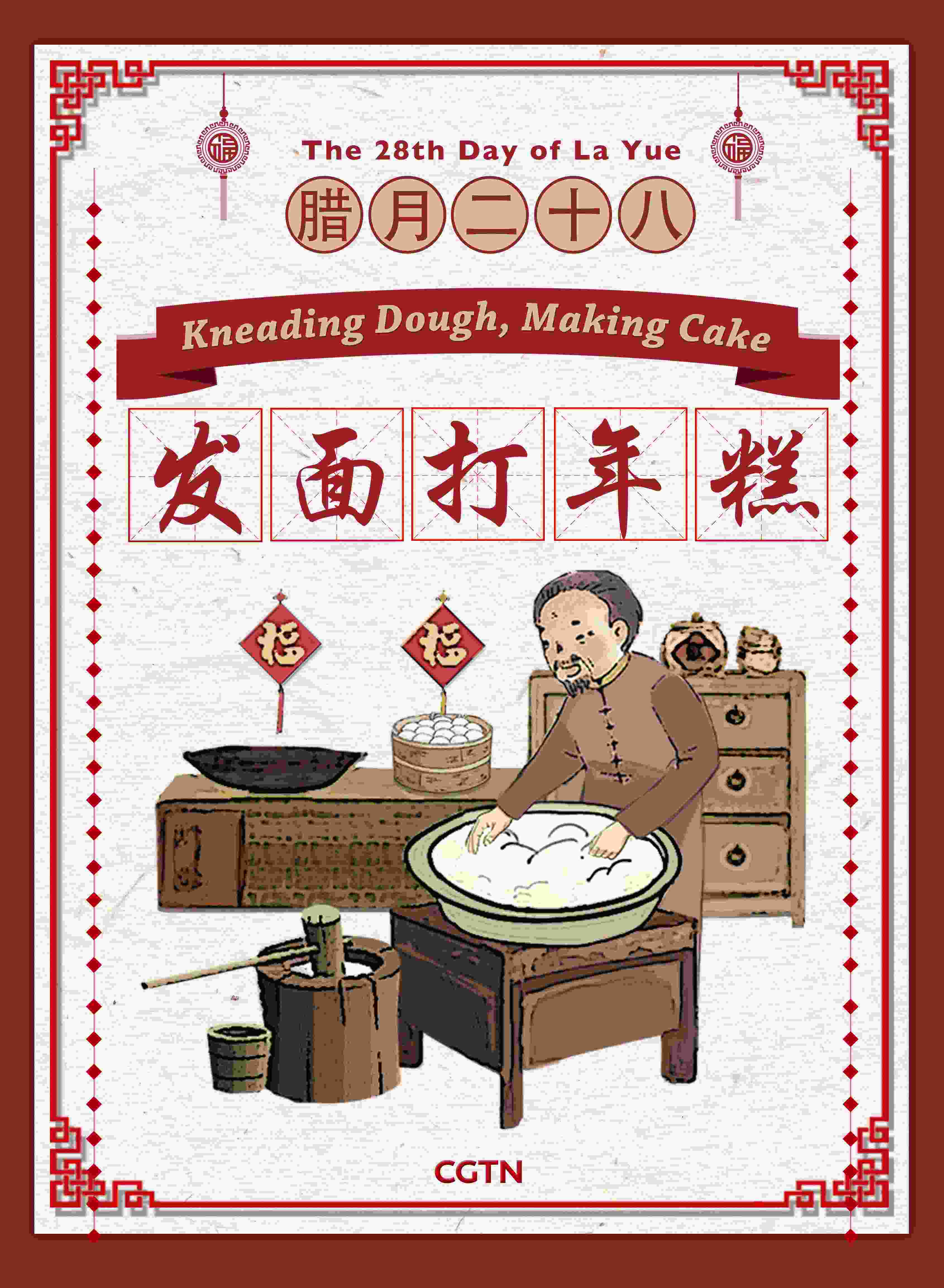
On the 28th day of La Yue, people start the making for staple food to be had during the first week of the New Year. /CGTN Photo designed by Du Chenxin
On the 28th day of La Yue, people start the making for staple food to be had during the first week of the New Year. /CGTN Photo designed by Du Chenxin
It's a tradition to prepare in advance all staple food for the whole family to eat during the first week of Zheng Yue (the first month of the Lunar New Year). Usually, the staple food is flour-made because it's easy to store. The activity starts from 28th and may last for one or two days.
People from the north make steamed buns with leavened doughs, while people in the south prefer Year Cake, or Nian Gao, made by glutinous rice. The steamed buns can be in various shapes, including cute animals, flowers, etc.
The 29th Day of La Yue
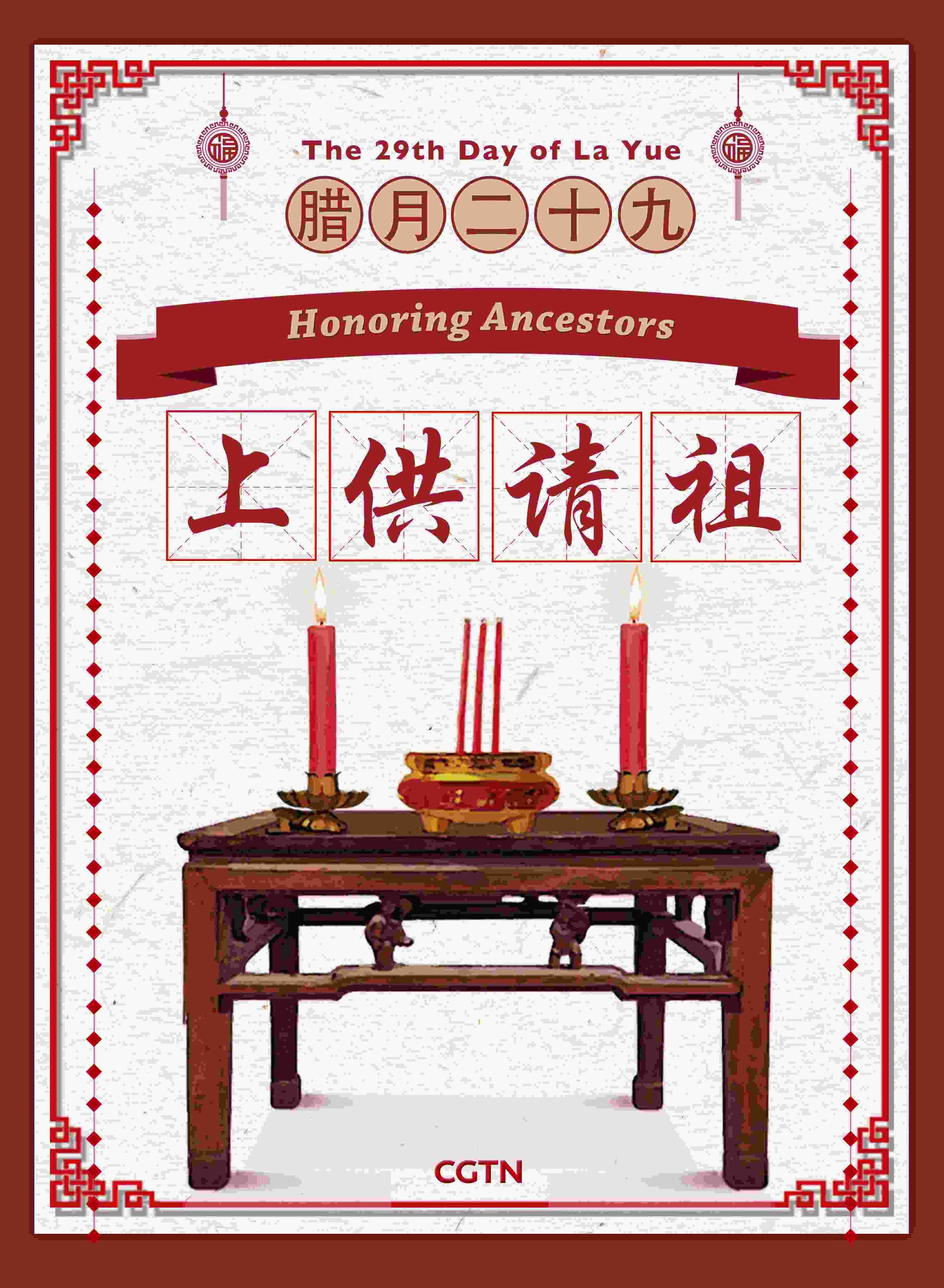
On the 29th day of La Yue, people honor their ancestors. /CGTN Photo designed by Du Chenxin
On the 29th day of La Yue, people honor their ancestors. /CGTN Photo designed by Du Chenxin
People in most of the areas get up early to sweep tombs for their ancestors and burn incense and joss papers in memorial of them. This is also a reflection of the traditional value "Xiao," or filial piety, in China.
The 30th Day of La Yue
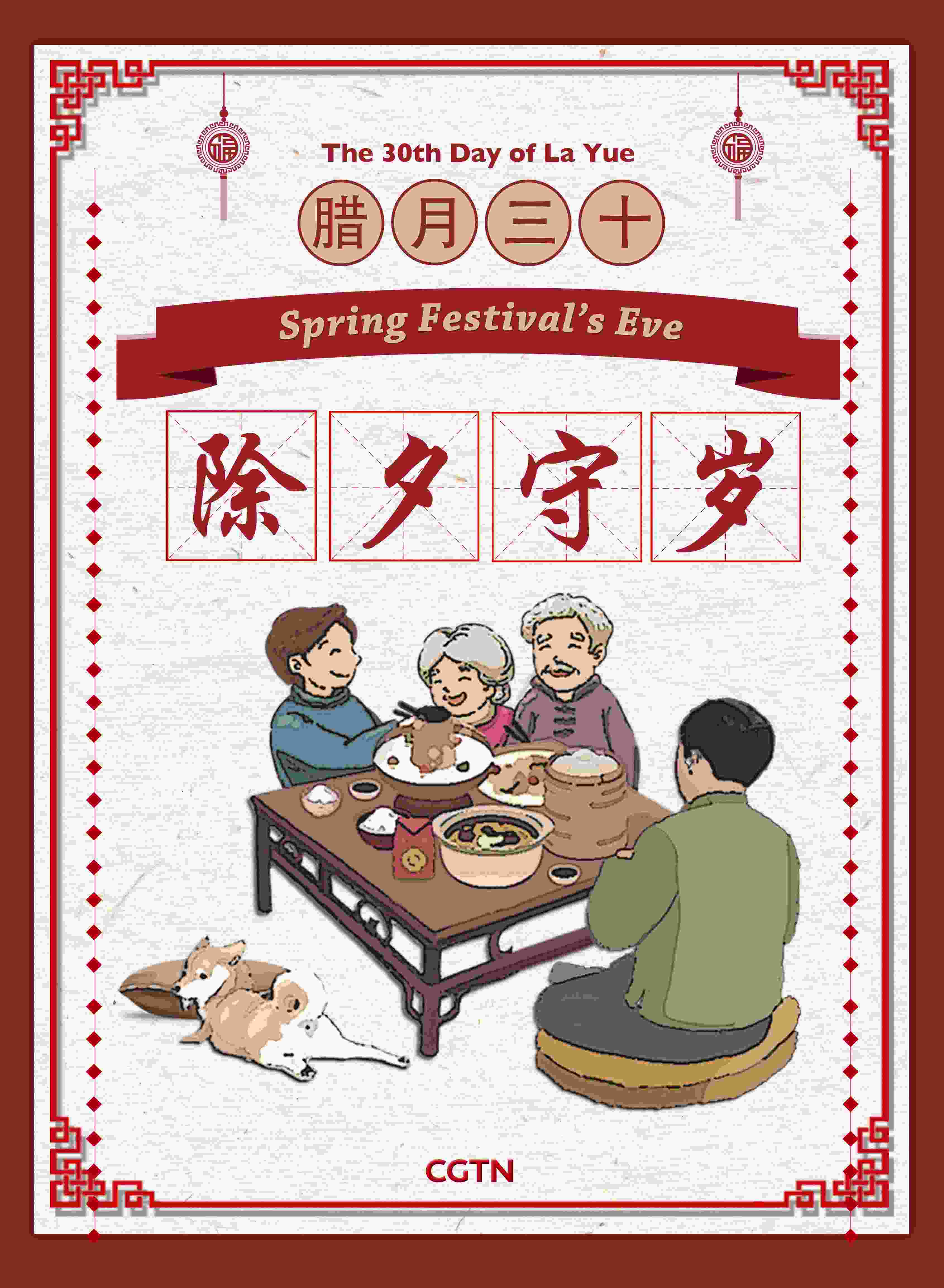
On the Spring Festival Eve, people stay up until midnight to bring in the New Year. /CGTN Photo designed by Du Chenxin
On the Spring Festival Eve, people stay up until midnight to bring in the New Year. /CGTN Photo designed by Du Chenxin
Finally, it's the Spring Festival Eve. This day is regarded as the most important day for family reunion throughout the year. Children who work or study outside the hometown, return home to celebrate the festival with their family.
The whole family enjoys a big feast at night while watching the Spring Festival gala. They stay up late and wait to ring in the New Year. A must-eat food is dumplings. Elders give kids red packets, or red envelopes, with cash in them.
In the days between 28th and 30th of La Yue, people also put on couplets on the gates, paper-cutting decorations on the windows, and New Year pictures on the walls of their homes to express their best wishes.
The First day of Zheng Yue
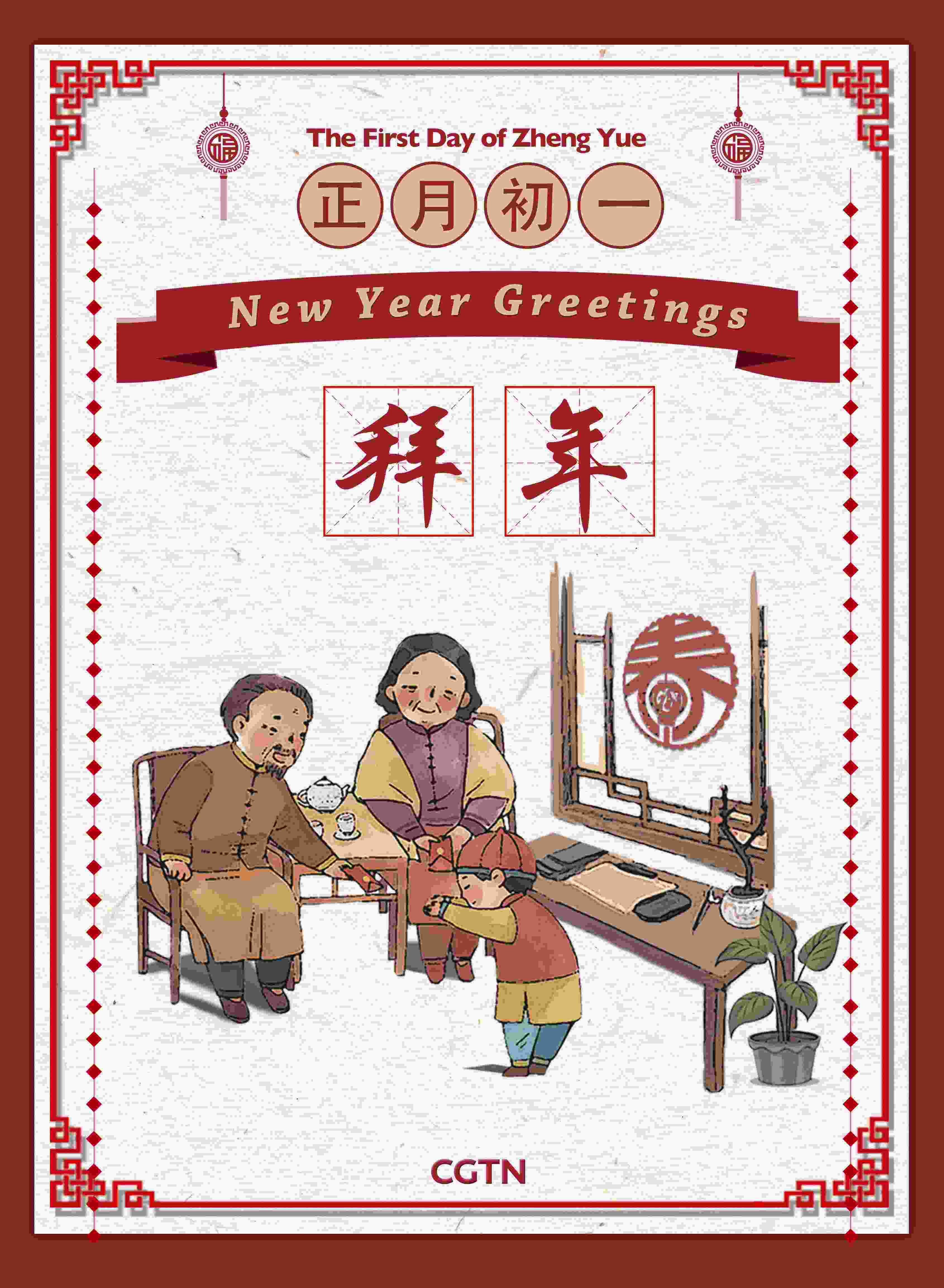
On the first day of the Lunar New Year, people make New Year's greetings to each other. /CGTN Photo designed by Du Chenxin
On the first day of the Lunar New Year, people make New Year's greetings to each other. /CGTN Photo designed by Du Chenxin
Embracing the first day of the New Year, people visit friends and relatives' homes and make New Year's greetings to each other. They use auspicious words to pray for good luck in the New Year.
Gong Xi Fa Cai (congrats for being more prosperous and better off), Wan Shi Ru Yi (everything goes as you wish), Shen Ti Jian Kang (being fit and healthy) are among the most frequently used greeting terms.
The Second Day of Zheng Yue
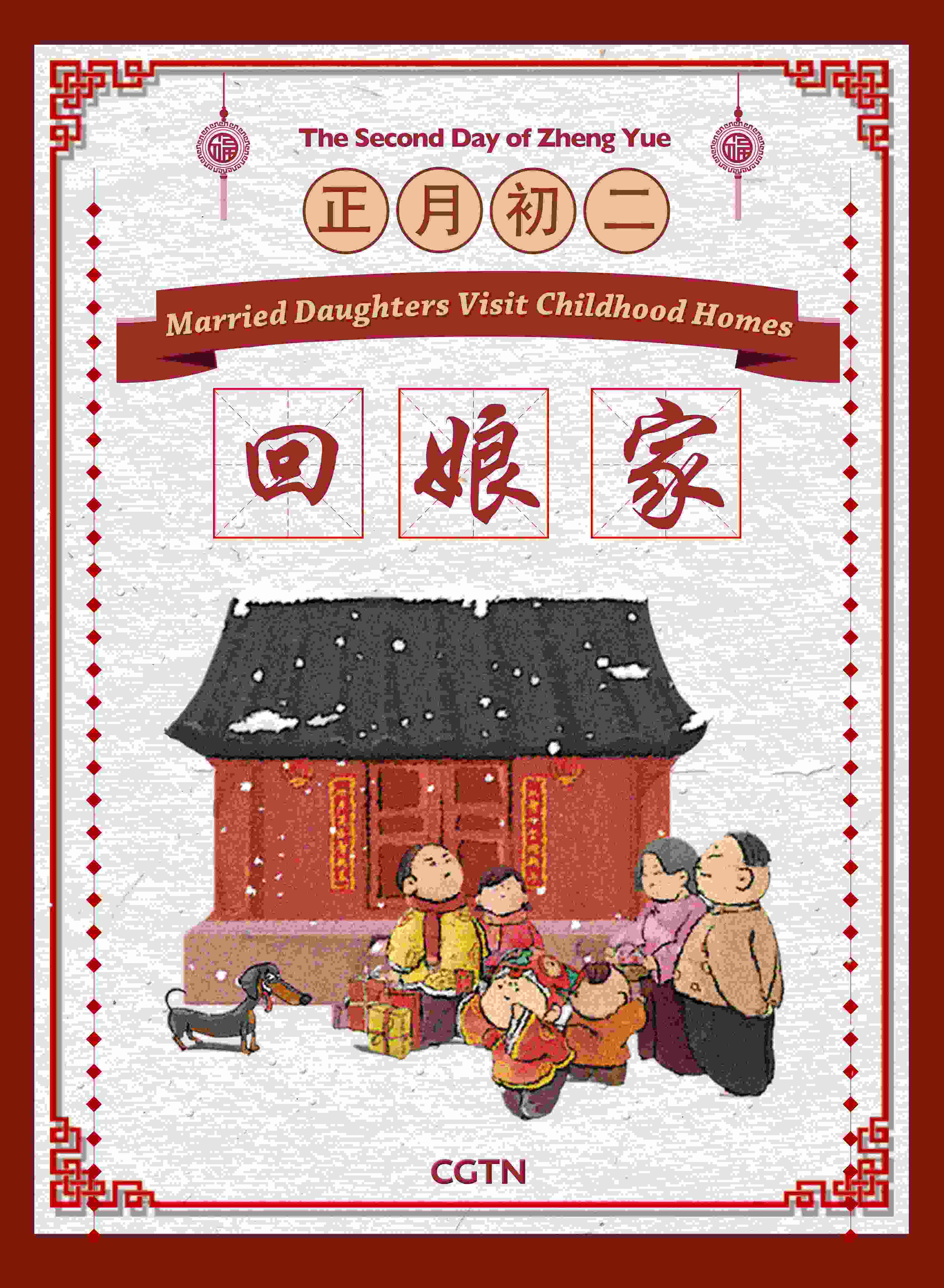
On the second day of the New Year, traditionally, married daughters visit childhood homes. /CGTN Photo designed by Du Chenxin
On the second day of the New Year, traditionally, married daughters visit childhood homes. /CGTN Photo designed by Du Chenxin
As married daughters traditionally spend the Spring Festival Eve with their husbands' families, on this day it's time to return to their original home and visit their families.
Today, this custom is weakened, since more people spend the eve of Chinese New Year in many different ways – not necessarily in their husbands' homes.
The 15th Day of Zheng Yue
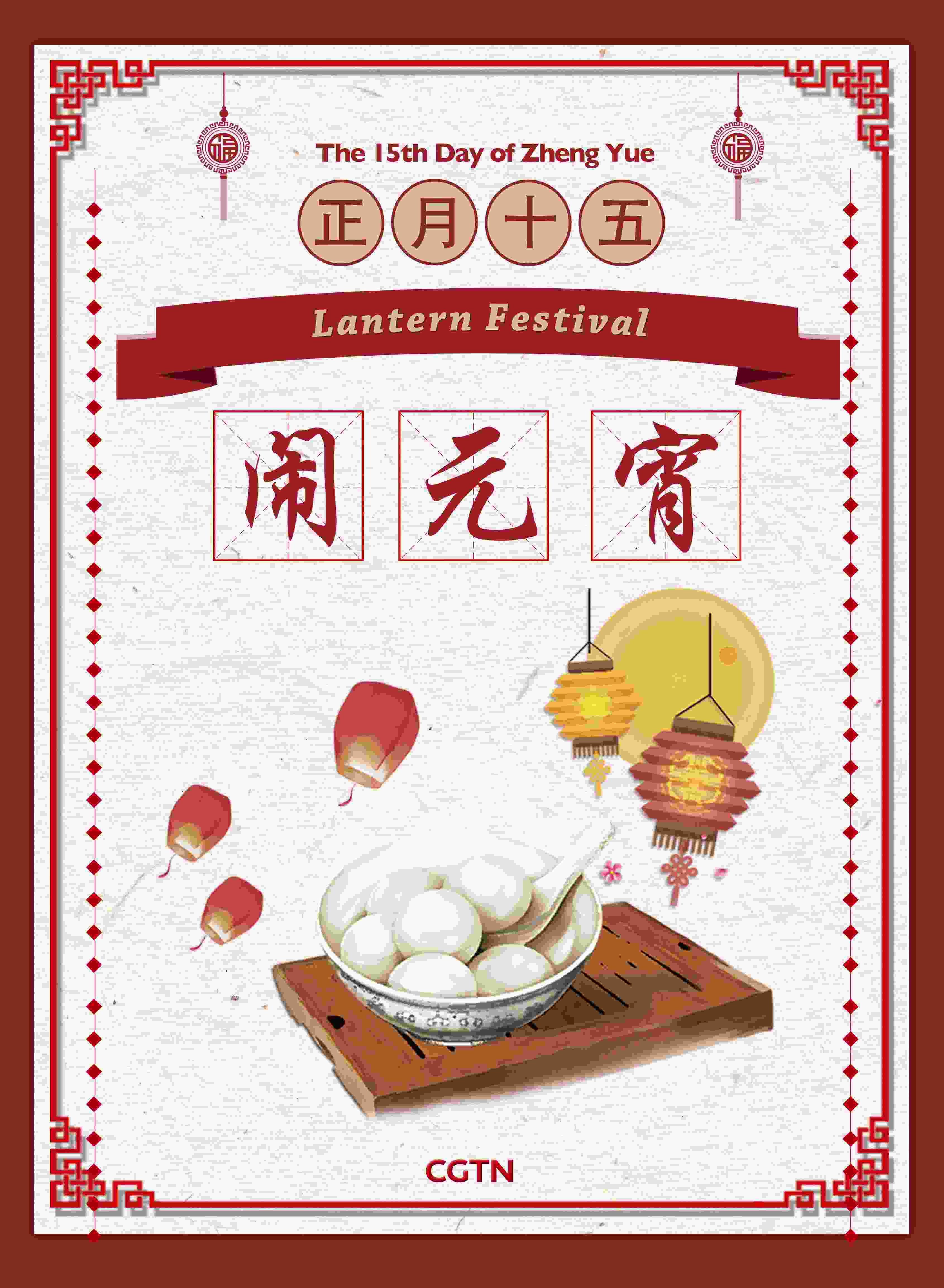
To celebrate the Lantern Festival, people light up lanterns, play riddle-guessing games, and eat Yuan Xiao or Tang Yuan. /CGTN Photo designed by Du Chenxin
To celebrate the Lantern Festival, people light up lanterns, play riddle-guessing games, and eat Yuan Xiao or Tang Yuan. /CGTN Photo designed by Du Chenxin
This day is called "Zheng Yue Shi Wu," or the Lantern Festival. Except for another warm family reunion, every household also hangs lanterns in front of the gate or on the balcony. It's also common to use colored lights to decorate the windows.
In some specially-held local lantern fair, there are riddles written on paper hanging under the lanterns. People can entertain themselves by guessing the answer of the riddles. A typical food on that day for northerners is Yuan Xiao, a ball-shaped dessert made with glutinous rice. Southerners eat Tang Yuan, a similar meal made by different techniques.
(Top Photo: A couplet with lucky words during the Spring Festival /VCG Photo)

